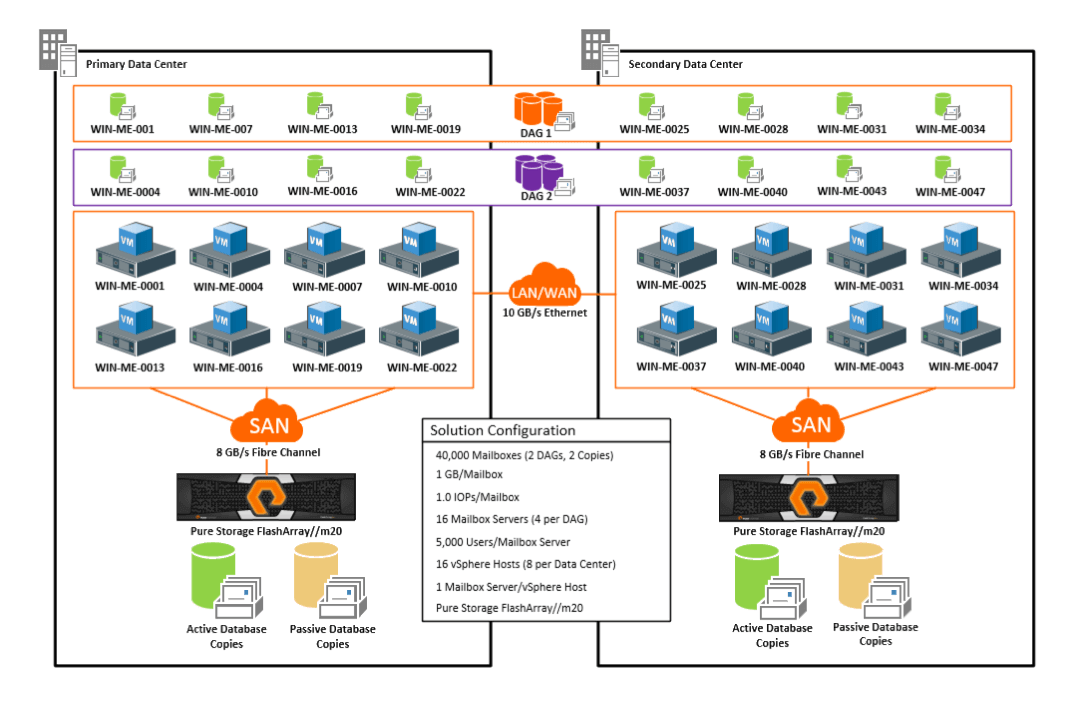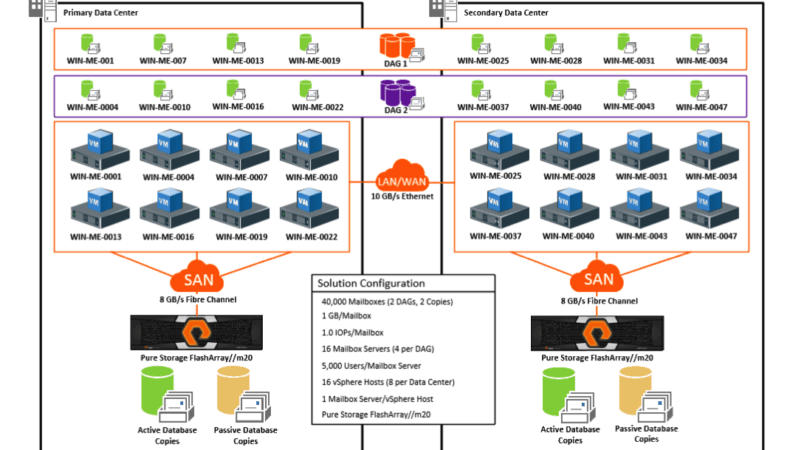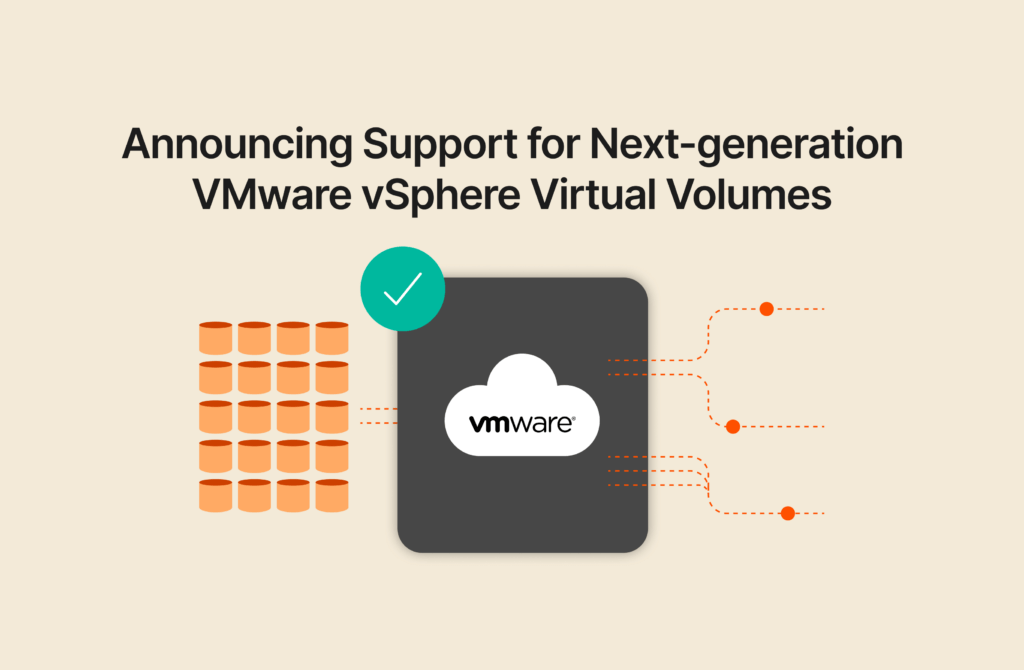Unlike traditional disk based storage solutions where various arrays are designed to address specific customer profiles, FlashArray//m is designed to consolidate multiple data center workloads on a single array. FlashArray//m can scale from small to very large organizations with several hundred thousands of users. For this ESRP, we are demonstrating a design where FlashArray//m20 supports 40,000 users while leaving enough room to support additional applications on the same array.
The storage adapts to application, not the other way around – Pure Storage is proud to present this ESRP on FlashArray//m20. In this configuration, FlashArray//m is hosting 40,000 mailboxes in mere 3U rack space and still has plenty of I/O bandwidth to spare! As an Exchange administrator, you still have resources in the array for more users and applications.
No more painful data migration every three years – As you can scale capacity and performance independently for generations, FlashArray//m helps to break storage silos and puts application administrators in the front row. You never need to go through painful migrations of Microsoft Exchange data from storage to storage every 3-5 years. The hardware and software for FlashArray//m evolve around the data non-disruptively with zero impact on Microsoft Exchange availability and performance during updates and refreshes.
Bring down total cost of ownership – Customers of Pure Storage consolidate multiple enterprise IT workloads into FlashArray//m without compromising performance and resiliency. In most cases, customers co-locate Microsoft Exchange with other applications on FlashArray//m. The average data reduction from such environments is found to be 4 to 1. The result is substantial reduction in operating expenses with low power, space and cooling requirements in the data center. In addition, the elimination of storage silos and complexity helps data center managers to focus on value added business projects.
Note: The 4 to 1 data reduction is based on real world data collected from Pure Storage’s Pure1 platform where Exchange is deployed along with other applications. During the ESRP tests, the data reduction is significantly higher as Jetstress generates significant amount of duplicate data by design.
Solution Architecture & Configuration

Targeted Customer Profile
The FlashArray//m solution for Microsoft Exchange 2013 from Pure Storage is designed for simplicity, reliability, and performance. It is scalable for any size organization that wants to deploy Microsoft Exchange Server on-premise on physical or virtual environments. This solution leverages the Cisco UCS platform to provide scalable compute resources. The characteristics of this solution include:
- 40,000 active user mailboxes
- 1.0 IOPS per user mailbox
- 1 GB mailbox size
- 16 virtualized Microsoft Exchange Servers each with 5,000 active users
- Native Database Availability Group (DAG) replication for mailbox resiliency and high-availability with 2 database copies maintained
- 24×7 background database maintenance (BDM) enabled
- 2 Pure Storage FlashArray//m20 storage arrays
Aggregate Performance Across All Server Metrics
The sum of I/O’s across servers in solution and the average latency across all all servers in solution.
| Database I/O | Value |
| Database Disks Transfers/sec | 44, 946 |
| Database Disks Reads/sec | 30,042 |
| Database Disks Writes/sec | 14,904 |
| Average Database Disk Read Latency | 1.06 ms |
| Average Database Disk Write Latency | 1.62 ms |
| Transaction Log I/O | Value |
| Log Disks Writes/sec | 6,679 |
| Average Log Disk Write Latency | 0.41 ms |
Access the full Exchange Server Reviewed Program (ESRP) from the Microsoft ESRP web site at https://learn.microsoft.com/en-us/exchange/esrp-storage?view=exchserver-2019.
Thanks,
Barkz




